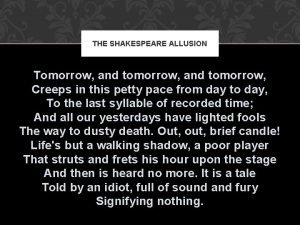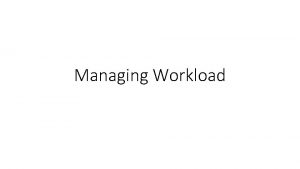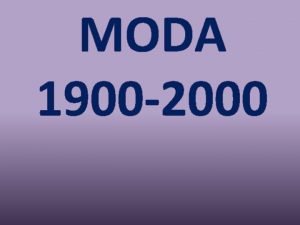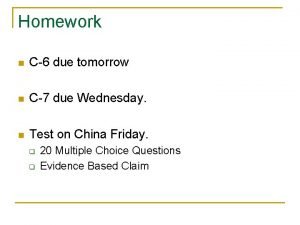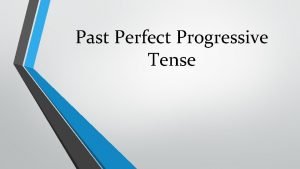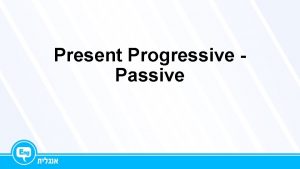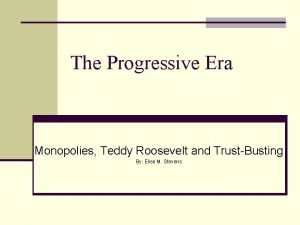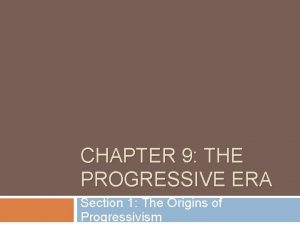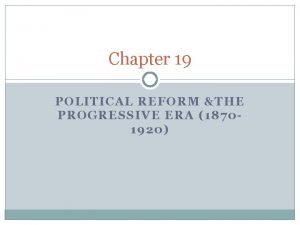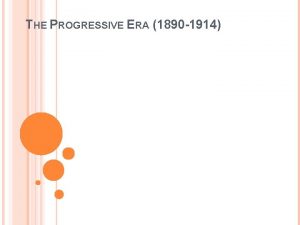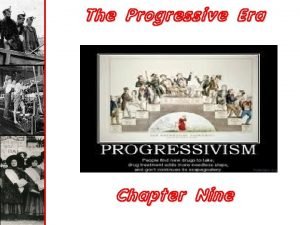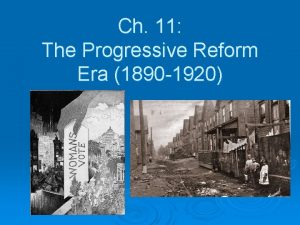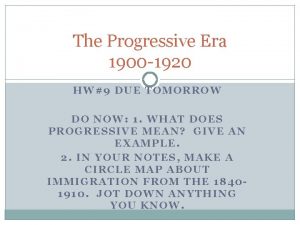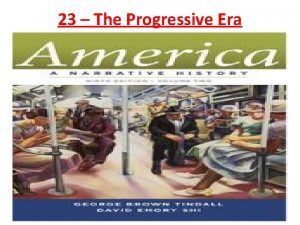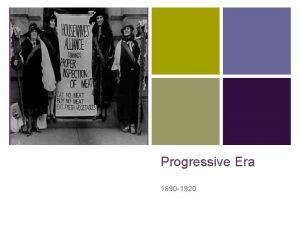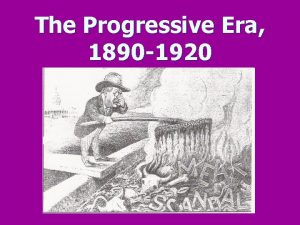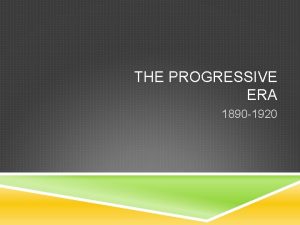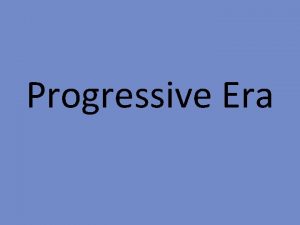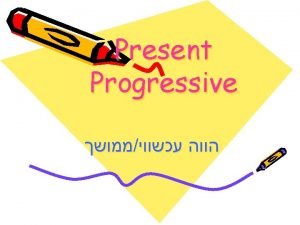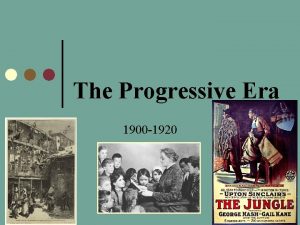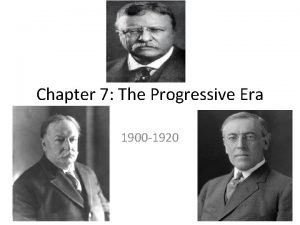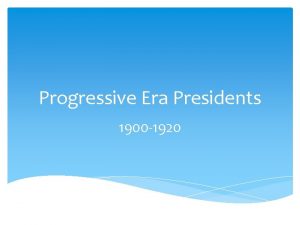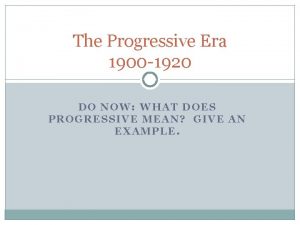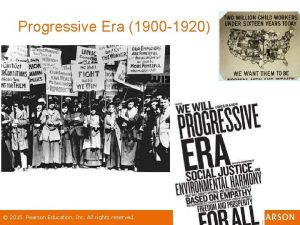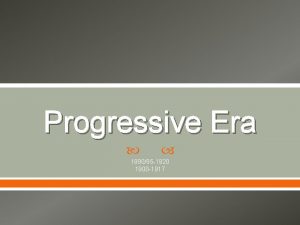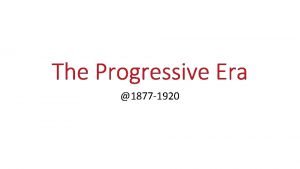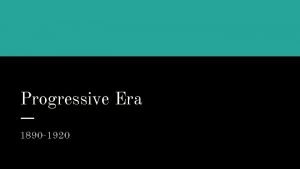The Progressive Era 1900 1920 HW9 DUE TOMORROW



















- Slides: 19

The Progressive Era 1900 -1920 HW#9 DUE TOMORROW DO NOW: WHAT DOES PROGRESSIVE MEAN? GIVE AN EXAMPLE.

I. Results of Industrialization �A. Urban Problems �B. Poor Treatment of workers & child labor �C. Immigration & nativism �D. Gov. corruption �E. Abuses of Big Business �F. Increased inequalities between wealthy & poor �G. Increased power & influence of middle class �H. Discontent among farmers

II. Reforms Demanded �A. Progressives support the use of government power to bring about reform 1. Use science and technology to improve society 2. Strengthen capitalism 3. Bypass party politics � a. spoils system

EQ: What problems existed in cities during the Gilded Age? � HW: Twitter Project due Thursday, Progressive Packet due tomorrow Do Now: Take out notes, while watching the clip jot down problems cities had

A Growler Gang in Session (Robbing a Lush), 1887

Street Arabs in Sleeping Quarters, c. 1880 s


EQ: What problems existed during the Gilded Age? �HW: Twitter Project Do Now: List the challenges did the “New Immigrants” faced once they Settled into the US?

EQ: What problems existed during the Gilded Age? �HW: Twitter Project Do Now: Explain the change shown in the two images

B. Specific Areas of Concern � 1. Poverty & living conditions among the poor � 2. women’s suffrage � 3. Peace � 4. Rights for African-Americans � 5. Temperance � 6. Anti-defamation � 7. Political �Corruption

Thomas Nast

C. Key Social Figures � 1. Muckrakers – Lincoln Steffens, Ida Tarbell � 2. poverty – Jacob Riis, Jane Addams � 3. Women – Elizabeth Cady Stanton, Susan B. Anthony, Alice Paul � 4. African-Americans – Booker T. Washington, W. E. B. Dubois, Ida Wells, Marcus Garvey

The Progressive Era 1900 -1920 HW: 1. TWITTER PROJECT DUE 3/5 AT MIDNIGHT 2. HW#13 P. 564 -568 ANSWER: P. 566 CKPT, P. 567 CKPT, P. 568 CKPT & CR. TH. #4 & #5 DUE 3/6 3. HW#14 TR AND WILSON REFORMS SHEET DUE 3/7 4. CASTLE LEARNING QUIZ DUE 3/8 5. TEST THURSDAY 3/9 DO NOW: READING ON ALICE PAUL


EQ: What advancements did African Americans make? Do Now: 1. Read the article on Booker T and Du. Bois. 2. Answer the questions on the bottom. 3. Make a T-Chart in your notes showing their differences in achieving their goals. http: //www. international. ucla. edu/africa/ mgpp/sound. asp http: //www. pbs. org/wgbh/amex/garvey/sf eature/sf_words. html#

III. Progressivism & the Government �A. Municipal reform (city level) �B. State reform focused on voter participation (Wisconsin Idea) direct primaries initiative referendum recall �C. National Reform 1. President � A)TR, Taft, Wilson � B) Square Deal (TR) � C)New Freedom (WW)

2. Legislative Progressivism �A) RR Regulation – Hepburn Act �B) Consumer protection – Square Deal �C) Conservation – National Parks �D) Underwood Tariff – Reduced Tariffs �E) Graduated Income Tax – 16 th Amendment �F) Clayton Anti-Trust Act – End trusts, strengthen labor �G) Federal Trade Commission – monitor business �H) Federal Reserve System – creates Federal Reserve Board

3. Supreme Court �A) Lochner v. NY (no limit on contract based work day) �B) Mueller v. Oregon (limit on women’s hours) �C) Northern Securities Co. v. US (trust broken up) �D) Hammer v. Dagenhart (banned child labor) http: //www. pbs. org/wnet/supremecourt/a ntebellum/majority 2 a. html

EQs � 1. Where did Progressivism get its start? � 2. What did the Progressives hope to achieve? � 3. What were the successes of the movement? The failures?
 Allusion in macbeth
Allusion in macbeth Tomorrow and tomorrow and tomorrow kurt vonnegut analysis
Tomorrow and tomorrow and tomorrow kurt vonnegut analysis Due tomorrow do tomorrow
Due tomorrow do tomorrow Due tomorrow do tomorrow
Due tomorrow do tomorrow Moda 1900
Moda 1900 Ilegalism
Ilegalism Past perfect vs past progressive
Past perfect vs past progressive Functions of past perfect tense
Functions of past perfect tense Present progressive passive
Present progressive passive Slidetodoc
Slidetodoc Due piccole sfere identiche sono sospese
Due piccole sfere identiche sono sospese Figura geometrica con quattro lati e quattro angoli uguali
Figura geometrica con quattro lati e quattro angoli uguali Liberty chapter 20
Liberty chapter 20 Progressive era monopolies
Progressive era monopolies What is muckraking journalism
What is muckraking journalism Chapter 9 the progressive era section 1 answers
Chapter 9 the progressive era section 1 answers Chapter 19 political reform and the progressive era
Chapter 19 political reform and the progressive era Promoting moral improvement
Promoting moral improvement Progressive era dbq answers
Progressive era dbq answers Chapter 11 the progressive reform era
Chapter 11 the progressive reform era
